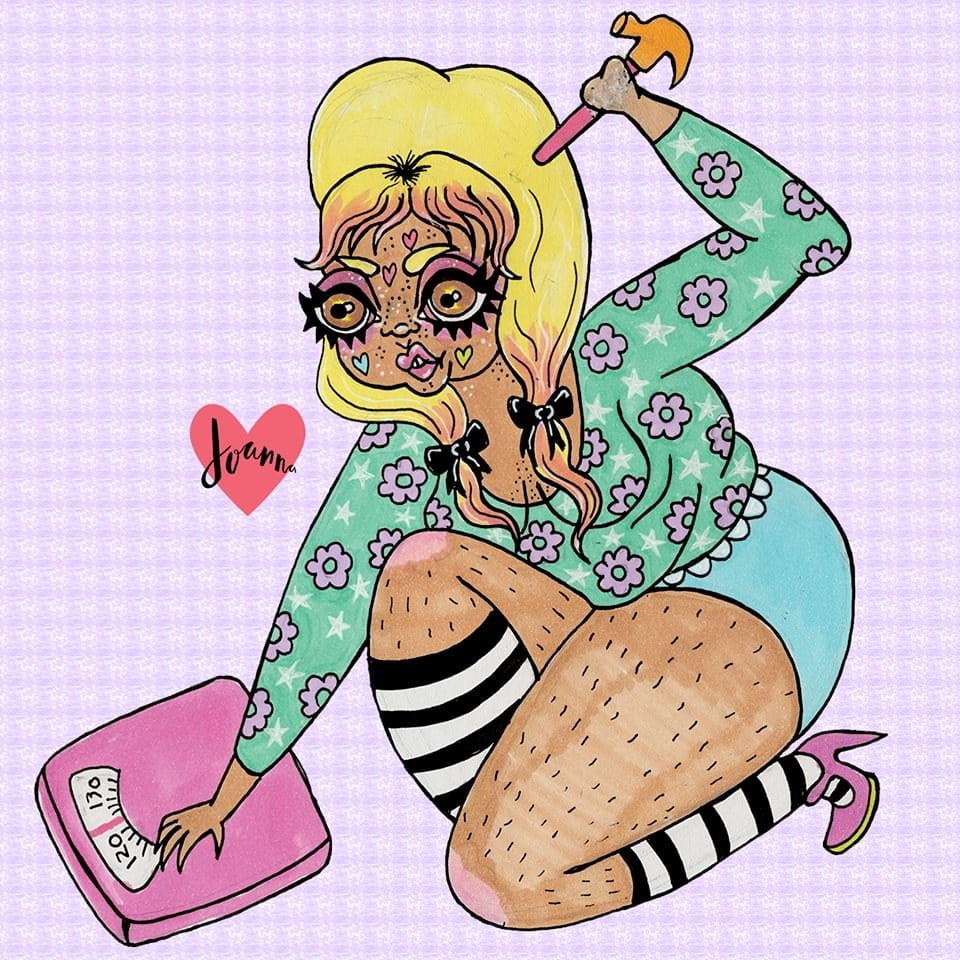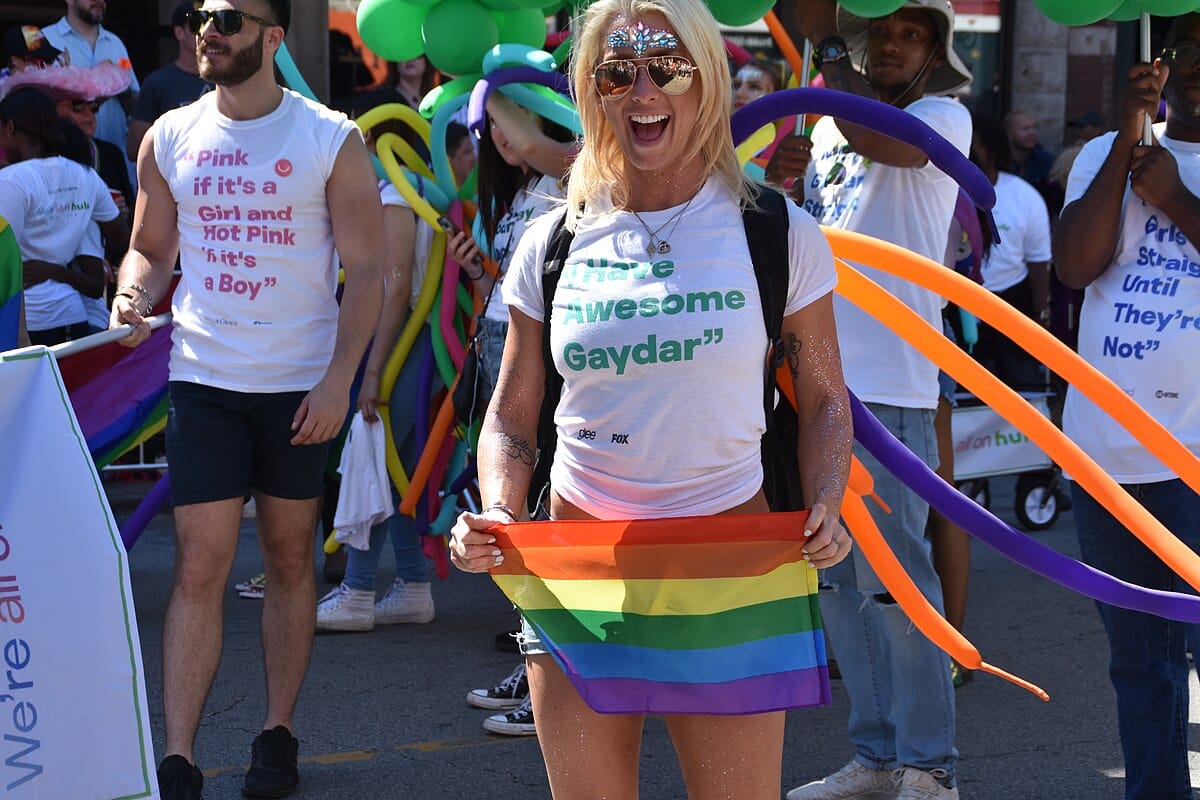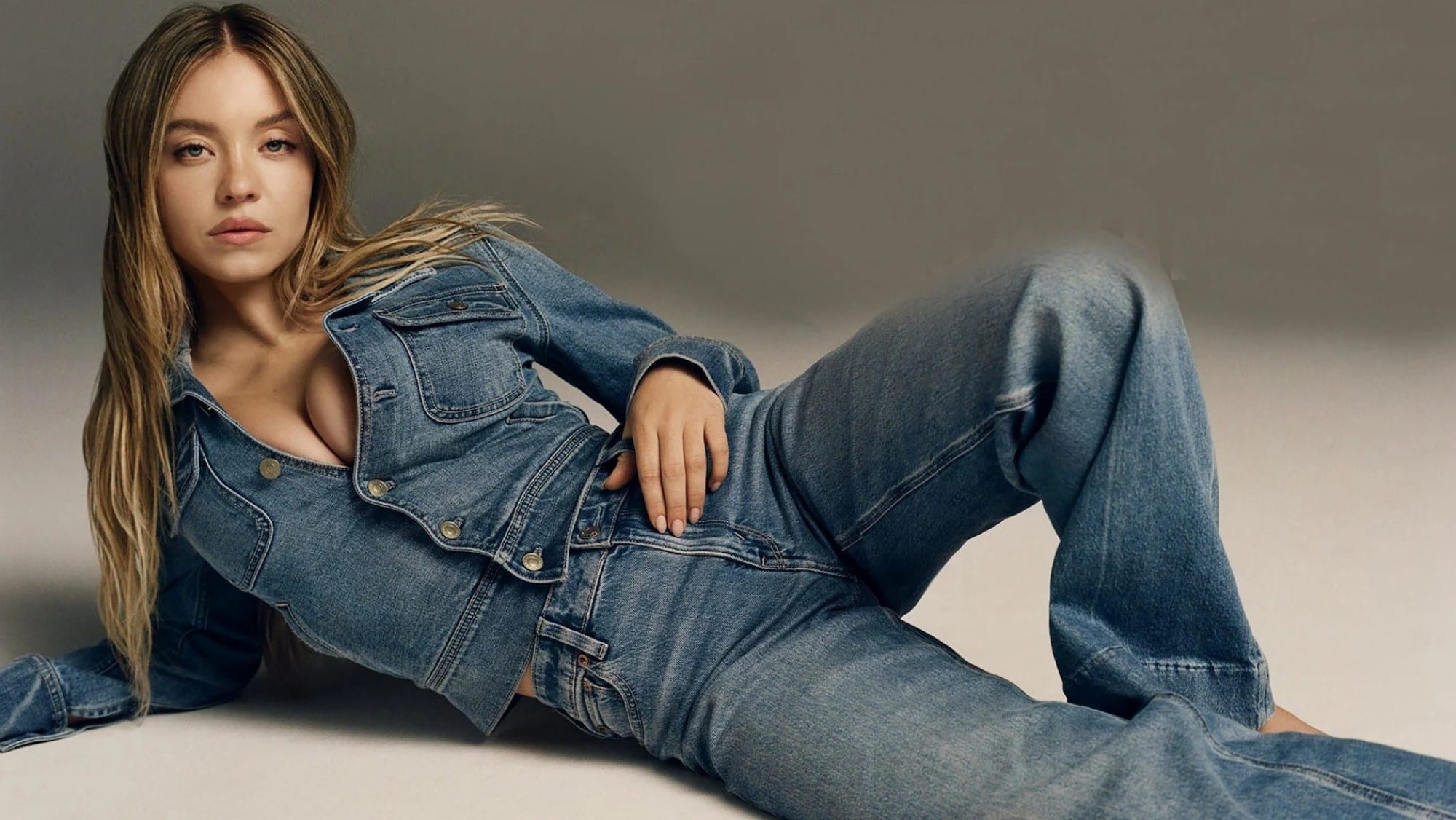Joanna Thangiah’s art reaches out and grabs your attention with its bright colours, irreverent themes, and its take-no-bullshit portrayal of fat, dark-skinned, sassy women. Being a brown woman (her parents are Sri Lankan) living in the predominantly white city of Sydney, Australia – Joanna’s art turns the personal political. And how could it not, when the very act of existing, and choosing to love one’s body as a woman of colour that doesn’t conform to Eurocentric beauty standards, makes you a rebel?
The non-conforming bodies of her portrayals come from a deeply personal space and reject imposed standards of beauty, of whiteness, of desirability, and cisgendered heterosexuality.
I had the lovely opportunity to speak with Joanna over an email interview, and asked her about her art, her politics, and why she does what she does.
AG: You are famous for your quirky, body-positive, sex-positive artwork. What spurred you into making body-positive art?
JT: My grandmother had just died, I was in an emotionally abusive relationship, I was on Christmas break from college and I hadn’t been going to therapy as much as I should have been. I was lost and had a lot of feelings that I needed to get out of my system.
I have suffered from an eating disorder for roughly 10 years. I’ve always had trouble with my weight as a child and as a teenager, but it spurred out of control when I turned into an adult. I had been in therapy for my eating disorder and various other mental illnesses for a year when I started making body positive art; it’s kinda my way to deal and accept my body as it is.
I grew up in an extremely conservative Christian household where sex was only discussed when it was referred to as a sin. I’ve always been very aware of my sexuality even as a small child. I may not have had the words or the understanding but the way my body would react around the people I was attracted to felt very natural to me. Sex and expressing my sexuality isn’t something that I’ve ever felt ashamed of for some reason.
AG: How does being a woman-of-colour feed into the kind of art that you make? Why is it important for you to depict the brown, fat, femme body in all of its glory?
JT: I’ve always had issues with my brown-ness. Living in a country that rarely represents people of colour in the media and having people that are openly white nationalists in parliament does that to a person.
Growing up surrounded by fallen Sri Lankan aristocrats isn’t exactly a self-esteem booster. My mother didn’t have money anymore but she still expected me to look and act a certain way – a lady, whatever the fuck that means. I had to wear nice clothes and wasn’t allowed to play out in the sun without constant applications of sunscreen. God forbid looking poor or too dark – ‘dark and ugly’ were the words that were thrown around a lot growing up.
The kind of racism I experience as a women of colour in Australia is very different to what the media portrays as racism. It’s snide, it’s sneaky, it’s done in a way that’s acceptable, it slides into conversations and seeps into our culture and no one bats an eyelid, and it has had a lasting effect on me. I grew up wishing that I was white. I fantasised about a life where I was white and thin. I grew up rejecting my culture, being embarrassed of my parents and their ‘funny’ accents, embarrassed of going out in public with my granny when she wore a sari. I mainly only ever had white friends growing up.
I’ve always been bigger and taller than the average brown girl. Hell, even brown dudes are smaller than me! That didn’t really bother me until I went to Sri Lanka for the first time. I felt very disconnected. I don’t look like my people and I don’t look like the people from the country I live in, nor can I really connect with either.
I make art about my experiences and the importance of representation not only as a way to deal and heal from my experiences but to show people the lasting effects these societal expectations have on individuals. Hating yourself totally sucks! If one person, especially a person of colour, can overcome that through my art then that’s just an added bonus.
AG: You’ve recently started a project where you feature the stories of queer, trans and non-binary people, and draw illustrations of them. How and why did this project come about? How has it been for you?
JT: I made a few pieces depicting trans women at the beginning of the year and I got a lot of hate for it. It’s pretty normal for me to get a lot of comments shitting on my work, its quite hilarious! But these comments were different, they were so hateful, people were harassing me continuously. Alt right accounts were sending their followers in packs. Instagram kept removing pieces (that didn’t infringe any terms and conditions) because people were continuously reporting them – I had a bunch of fully clothed selfies removed.
It really sucked, but it gave me a teeny tiny insight into what the trans and gender nonconforming community experience. Granted, what I experienced is nothing in comparison, but it crushed me. It didn’t feel right to make art about that experience because the fight for trans and other gender non-conforming people isn’t my fight – it’s not my place to speak on behalf of them. But as an ally I felt like I wasn’t doing enough. Plus nothing says fuck you to a bigot than empowering the people they hate (not going to lie, I’m a petty bitch) so that’s why I started this portrait series.
It hasn’t been that long since I started, but I have learnt so much! Not just about their community but about myself and how much of my own behaviours and thought processes I have to change; how much cis-centric bullshit I’ve internalised and how what’s considered to be harmless words can be so harmful to certain individuals.
I feel so blessed and privileged that I get to share these stories in a way that humanises their fight for existing as their authentic selves. Sure I’ll never truly get to understand what its like to be them but I can identify with the themes that are apparent in their stories. Pain, rejection, and disrespect; these are feelings that all humans can identify with.
The piece below was the first piece I did for the portrait series about trans, non-binary and genderqueer people. Brody, the person who is in this portrait, is the person that gave me the idea to do this series long before I started really making any trans art. I don’t know them personally but I am so thankful for their existence and I feel very connected to them.
AG: What’s the response been like to your art? How has making your art made an impact on you?
JT: People either really love my art or they really hate it. As an artist it’s really cool to get that kind of response, that my work is making people react. Making this kind of art has definitely helped with my self-esteem, and my worth. I really like the person I have become because of this experience. I wasn’t exactly the nicest or the most caring person before I started going to therapy and taking medication (apathetic zombie is an accurate description) now I’m an empathetic ball of emotions and it feels really good!
I think its safe to say that FII, and all our readers, love Joanna’s art! She has 61k followers on her Instagram – proof that the world craves more fat-positive, non-conforming bodies in mainstream pop culture. You can also follow her on Facebook, which she claims she hardly ever uses. She also sells her art on clothes, jewelry and prints at her online store.
About the author(s)
Asmita is a Freelance Communications Consultant, and specialises in leading digital advocacy campaigns for social and gender justice issues. When not using social media for work, she uses social media for fun (and a healthy dash of existential despair).




